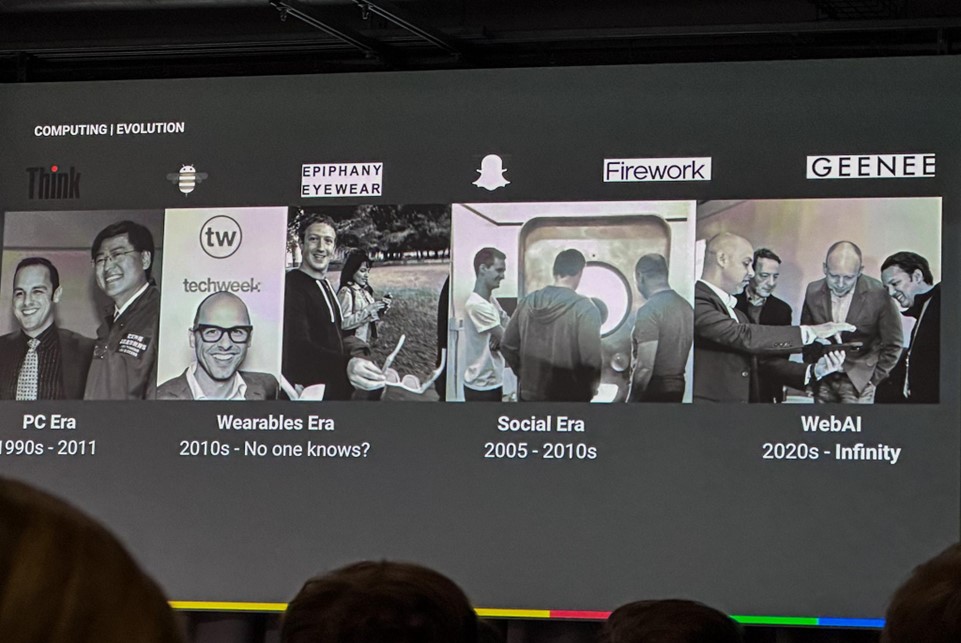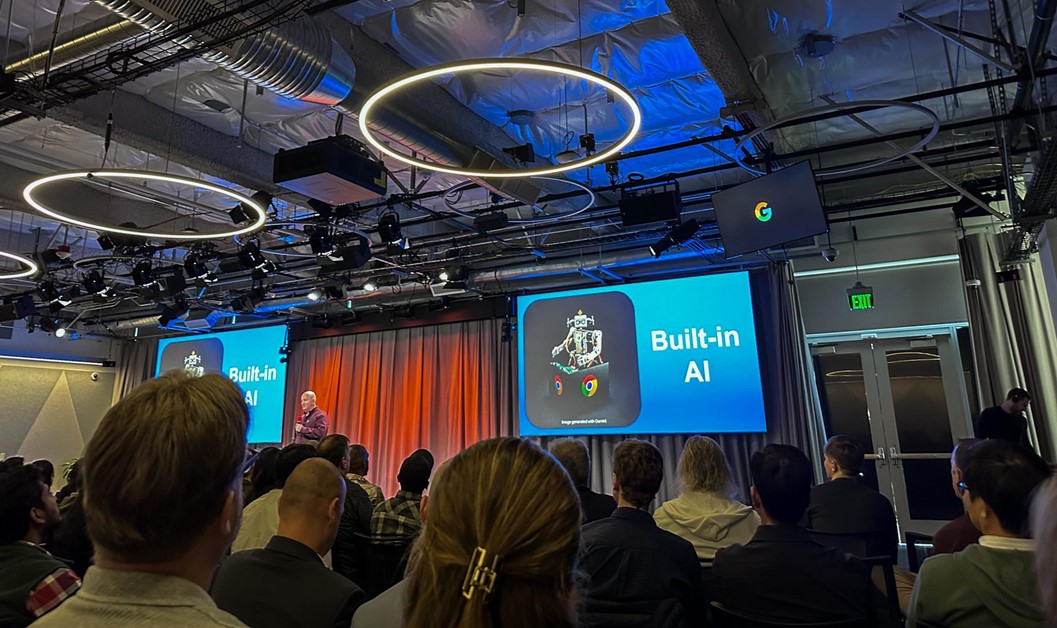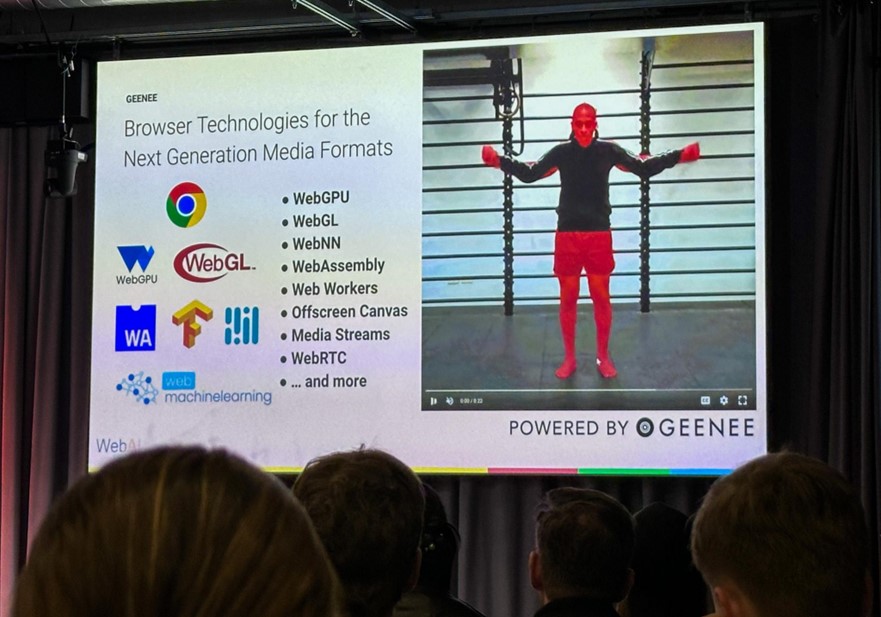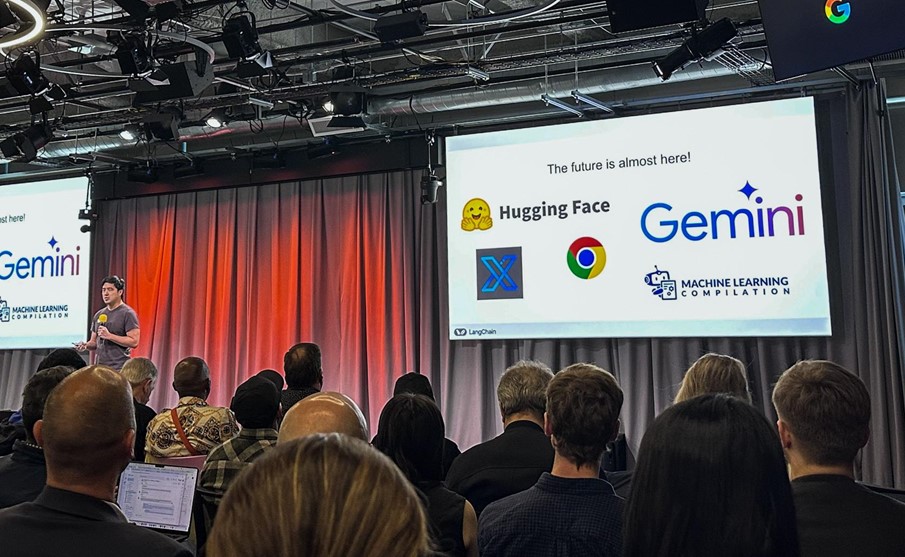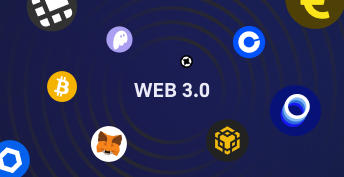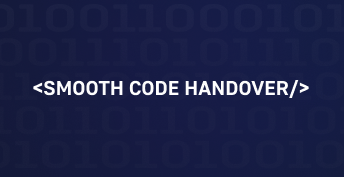We live in an era where web platforms are no longer passive – they think, respond, and adapt in real-time. Web AI is at the core of this transformation, reshaping websites into interactive ecosystems that can predict, engage, and learn.
As artificial intelligence (AI) and machine learning (ML) become essential components of innovation, they enhance a wide range of systems, especially online. In fact, nearly two-thirds of Personal Internet Computing (PIC) cycles globally are spent on the web, with 66% of those cycles dedicated during weekends, compared to 61% during weekdays (Source: Intel DCA, July 2022).
On October 18, 2024, Google’s Sunnyvale office hosted a transformative Web AI Summit, bringing together experts from Google, Hugging Face, Intel, and others in AI and web technologies. The event emphasized webAI’s potential to reshape digital experiences by enabling advanced AI models to run directly within web browsers – a shift expected to benefit user privacy, reduce latency, and lower costs. This shift has the potential to democratize access to AI and fuel a new wave of innovative web applications.
Why Web AI? A Brief Look at the Evolution of WebAI
The web was once a collection of static pages—information laid out like a digital brochure, waiting to be read. Over time, it evolved, becoming dynamic and user-driven. But even then, websites only responded to direct user input. Web AI changed everything.
Today, AI transforms websites from mere responders to proactive assistants. The shift is evident in multiple areas:
- Real-time Product Recommendations: AI predicts what users are likely to buy, often before they realize it themselves.
- AI-Powered Chat Assistants: Bots are no longer just answering FAQs—they’re resolving complaints, upselling products, and learning from interactions.
- Predictive User Experience: Websites adjust offers, and messaging based on individual behavior patterns, ensuring each user journey feels custom-made.
The journey of AI has been long and storied, evolving from basic algorithms to complex neural networks. With the advent of powerful web standards like WebAssembly, WebGPU, and WebNN, the potential for AI to run directly in the browser has finally become a reality.
These technologies are key enablers, allowing developers to create sophisticated AI applications that operate seamlessly within the web environment.
- JavaScript and WebAssembly. JavaScript remains the foundation for web development, while WebAssembly provides near-native performance, allowing AI models to perform heavy computations within the browser without significant delays.
- WebGPU. This powerful graphics API offers hardware-accelerated graphics and computation, giving the browser access to more processing power, making it capable of handling complex AI tasks like image recognition and natural language processing.
- Web Neural Network API (WebNN). Optimized for neural network tasks, WebNN enhances the efficiency of computations directly in the browser, supporting smooth operation of AI-powered features even on lower-power devices.
Building on this foundation, WebAI represents a recent innovation that integrates artificial intelligence directly into web applications without offloading tasks to external servers, advancing privacy and performance.
Key Announcements at the Google Web AI Summit
Google has consistently led the way in technological innovation, with AI representing a major advancement in computing capabilities. As a key player in the tech landscape, Google understands the strategic importance of AI leadership.
The Google Web AI Summit was a pivotal event that showcased this technology’s promise. As organizations increasingly recognize the benefits of on-device AI, the summit emphasized the tech community’s collective ambition to leverage Web AI’s potential.
During the event, several groundbreaking developments in Web AI technology were introduced, along with new frameworks and tools aimed at simplifying AI integration into web applications.
Here are some key developments:
- On-Device AI. A major highlight was the introduction of lightweight large language models (LLMs) that can run directly in browsers without relying on cloud infrastructure. This on-device AI, powered by frameworks like the Gemma Web model, derived from Google’s Gemini research, offers real-time, high-performance machine learning, reducing costs and improving privacy by keeping data processing local.
- Visual Blocks for Fast Prototyping. Google also unveiled enhancements to Visual Blocks, a no-code AI prototyping tool that now integrates resources from Hugging Face. The partnership showcased practical applications of WebAI, such as object detection, text classification, and image segmentation. Visual Blocks lets developers and non-coders experiment with AI models in the browser, speeding up prototype and application creation, without the heavy demands of server-side processing.
- Accessibility of AI for All Developers. User-friendly libraries and frameworks are lowering the barrier to entry for web developers to implement AI. Tools like ml5.js are making AI integration more accessible, allowing even those with minimal AI expertise to build intelligent applications.
- Powerful Machine Learning on the Web. New tools like Transformers.js and ml5.js are making it easier for developers to incorporate advanced machine learning models directly into web applications, enabling smarter, more interactive experiences without requiring server-side infrastructure.
- WebAR. Web-based augmented reality (WebAR) emerged as a surprising highlight. Presenters demonstrated how immersive AR experiences can now be delivered smoothly through browser AI solutions without needing dedicated apps. This opens the door for more interactive and engaging web experiences.
- Advances in Browser-Based Machine Learning. The summit also highlighted advancements in browser-based AI through technologies like the WebNN API and WebML. These innovations allow more complex AI tasks to run directly within the browser, enhancing performance and bringing AI closer to the end user.
- JavaScript Integration with WebGPU: WebGPU, Chrome’s graphics API, has expanded to support higher GPU capacities, enabling AI workloads directly in JavaScript. This upgrade allows Chrome-based applications to handle sophisticated, graphics-intensive AI tasks like image processing and augmented reality without relying on cloud servers, opening up exciting possibilities for immersive, real-time web applications with AI-driven interactions.
Exploring the Two Sides: Benefits and Challenges of WebAI
The power of Web AI is undeniable. But like every technological advance, AI’s integration into the web brings a complex of both great benefits and significant challenges. Understanding both the advantages and challenges of WebAI is essential for navigating its impact on our digital lives.
Benefits
- Cost Efficiency. By utilizing the processing power of users’ own devices, companies can reduce their reliance on costly server infrastructure. This could make advanced AI tools more accessible for smaller organizations or independent developers, fostering a broader ecosystem of innovation.
- Reduced Latency. Running AI models locally eliminates the delays associated with server communication, enabling instant responses for real-time applications, such as language translation and augmented reality.
- Greater Technology Access. AI and machine learning open up advanced tools to a wider range of users, allowing more individuals and organizations to take advantage of innovative technologies in various fields. This could also extend to improving web accessibility for users with disabilities, for example, by providing alternative text for images or generating captions for videos.
At the same time, we recognize that AI, still a developing technology, brings with it a range of evolving challenges and risks, especially when applied to Web AI.
Challenges
- Browser Compatibility. Web AI relies on specific web technologies (WebGPU, WebNN) that may not be fully supported across all browsers or devices, potentially limiting reach and creating compatibility issues.
- Security Risks and Data Exploitation. Many AI applications gather vast datasets without clear consent, raising concerns about the collection, use, and potential exploitation of sensitive information. While WebAI aims to enhance privacy, improper implementation or vulnerabilities could still lead to data leakage from user devices.
- Amplification of Bias and Discrimination. Machine learning models that learn from web data can pick up and even worsen existing societal biases, resulting in discriminatory outcomes, particularly for marginalized groups that are frequently underrepresented online. Addressing these biases in AI algorithms is crucial to ensure fair treatment and prevent discrimination across all user groups.
While the Google Web AI Summit focused primarily on the positive potential of WebAI, it’s important to consider the potential downsides and challenges. Understanding both sides of the conversation enriches our perspective and prepares us for the complexities ahead.
Web AI in Action: Potential Applications of WebAI
Web AI offers enormous potential, but only if applied strategically. Here’s what’s possible—and what to watch out for:
Opportunities:
- Hyper-Personalized E-Commerce: Think of a store that customizes its homepage for each visitor, presenting only the products they’re most likely to buy.
- Smarter Lead Generation: AI-based systems analyze visitor behavior to identify high-value prospects and nudge them toward conversion.
- Proactive Customer Support: Instead of waiting for users to complain, AI tools identify potential issues and offer solutions before they escalate.
Risks:
- The Filter Bubble Problem: If a website personalizes too much, users might only see the same types of content or products, missing out on new ideas or options.
- AI Dependency: Businesses that rely too heavily on AI risk losing the human touch—something customers still value deeply.
- Compliance Challenges: AI needs to align with global privacy laws (like GDPR), which can be a significant undertaking for many companies.
The potential applications of WebAI span multiple industries.
- Healthcare: Applications could offer real-time diagnostics, personalized insights, and monitoring tools directly within a browser, without transmitting sensitive health data over the internet.
- Education: Interactive learning platforms could adapt in real time to students’ progress, offering personalized tutoring and feedback without requiring constant internet connectivity.
- E-commerce: Personalized, AI-driven recommendation systems could operate directly on websites, providing fast and customized shopping experiences without relying on external processing.
- Financial Services: Fraud detection algorithms could analyze transactions locally in real time, improving security and user experience.
- Gaming: In-game interactions could become more responsive and tailored to individual players by running AI-driven behaviors and recommendations on-device.
- Smart Home Integration, IoT: Localized AI processing in browser-based smart home interfaces could improve privacy and responsiveness for devices like security systems, lighting, and personal assistants.
Create Your Web AI Tool with IT-Dimension
At IT-Dimension, we go beyond trends—we create solutions. Our Web AI tools don’t just enhance websites; they redefine digital experiences, making every interaction smarter, faster, and more personal. With our deep expertise in developing cutting-edge software and web applications across all these industries, we can help businesses tap into the power of this transformative technology to create innovative and user-centric solutions.
Here’s how we help businesses unlock the full potential of Web AI:
- AI-Powered Chatbots and Virtual Assistants: Engage customers 24/7 with bots that don’t just answer questions—they solve problems and drive sales.
- Intelligent Search Engines: Our AI-enhanced search functions predict what your users need, delivering faster, more relevant results.
- Tailored E-Commerce Solutions: Build online stores that adapt to each visitor, offering personalized recommendations and promotions in real-time.
With our expertise, we ensure smooth integration and secure implementation, so your AI tools perform seamlessly from day one. Whether it’s building predictive analytics platforms or creating virtual sales agents, we tailor our solutions to meet the specific needs of your business.
Conclusion
The Google Web AI Summit underscored a significant shift in the AI landscape by bringing AI capabilities directly to web browsers. This opens up exciting new possibilities for developers like us to create a new generation of accessible, high-performing, and cost-effective AI applications.
As WebAI continues to develop, we’re likely to see even more innovations, making intelligent web applications an everyday reality for users everywhere. The future of webAI is where anyone, anywhere, can experience the power of AI without depending on external infrastructure, marking a revolutionary step in the world of online AI experiences. Businesses that adopt Web AI today won’t just keep up with the future—they’ll lead it.
As pioneers in software development, we’re excited to embrace this paradigm shift and help our clients leverage WebAI to build innovative and impactful solutions.
Contact us to discover how we can help you take advantage of the power of WebAI and transform your digital solutions.
Sources:
https://www.w3.org/reports/ai-web-impact/#interop
https://ai.google/static/documents/google-why-we-focus-on-ai.pdf




